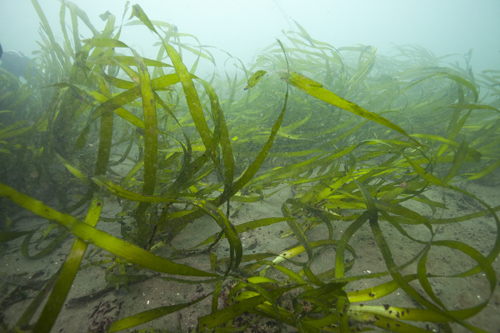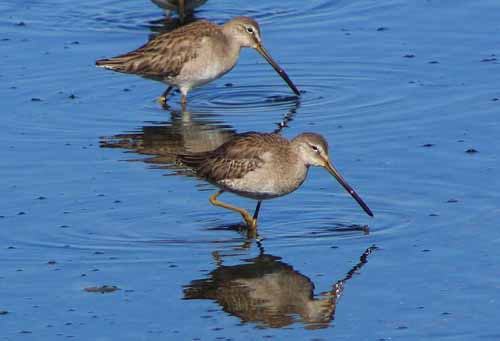Estuaries represent the confluence of terrestrial, freshwater and marine ecosystems, creating multiple unique habitats that support highly diverse communities, provide important ecosystem services (such as nursery and feeding grounds for fishes and birds) and provide crucial links to many nearby ecosystems.
The Greater Farallones National Marine Sanctuary encompasses four major estuaries: Tomales Bay, Bolinas Lagoon, Estero Americano and Estero de San Antonio. Bolinas Lagoon and Tomales Bay are designated “wetlands of significant importance” under the International Convention on Wetlands.
Within the Monterey Bay National Marine Sanctuary there are 26 estuarine habitats identified by the U.S. Fish and Wildlife Service and listed in its National Wetlands Inventory. The largest estuary in this sanctuary is Elkhorn Slough.
These estuaries provide important marine and nearshore habitats for a diverse array of marine mammals and birds in addition to fishery, plant, algal and benthic resources. They also serve as important resting and/or feeding stops for migratory species using the Pacific Flyway, one of the four principal bird migration routes in North America.
NOAA recognizes their value in filtering and absorbing pollutants and excess nutrients, water storage during wet seasons, protective services as green infrastructure, carbon dioxide storage, and serving as a nursery for important fishes. To learn more, view the NOAA wetland infographic (1 page PDF).
Inhabitants

Many different habitat types are found in these northern California estuaries, including mudflats, marshes, rocky shore, coastal scrub and grasslands. Species vary greatly, depending on the particular habitat. For example:
- Estuaries are popular places for observing marine mammals and birds, from sea lions and harbor seals to herons, pelicans and egrets.
- Fish species range from the endangered tidewater goby to leopard sharks and even blue and white sharks. Other examples of fishes found in these estuaries include seasonal populations of salmon, steelhead, sardine and lingcod.
- California sea otters are common in Elkhorn Slough but rare in more northern estuaries. River otters, on the other hand, are commonly observed in Tomales Bay headwaters.
- The soft-bottom habitats associated with estuarine environments

Likely Long-billed Dowitchers Limnodromus scolopaceus. They were foraging in the northern marsh just past the Jetty Road culvert. support large concentrations of burrowing organisms, such as clams, snails, worms and crabs.
Conservation and Management Issues
Estuaries are highly productive habitats, but they are also increasingly rare and very fragile. Human encroachment has compromised their ability to provide biological services and has diminished their ability to act as an environmental filter.
The health of northern California estuaries is threatened by a number of factors:
- Oil pollution
- Non-point source pollution
- Urbanization and watershed developments
- Aquaculture
- Introduced species
- Wildlife disturbance
Monitoring
Monitoring estuaries is challenging because of the numerous habitats and incredible diversity of species found within them. For the same reasons, estuaries also present incredible opportunities to study physical, chemical and biological processes at multiple spatial scales and across different ecosystems.
The Greater Farallones sanctuary works with federal and state agencies to monitor its nearshore and estuarine areas for pollutant, oxygen and nutrient levels and algal blooms. The watersheds of these areas are affected by agriculture, livestock grazing, improperly treated effluent, dumping, historic mining and development.
Examples of research efforts include:
- The Bolinas Lagoon Restoration Project: Since the early 19th century, human land uses have altered this lagoon’s shoreline and watershed, increasing the rate of sediment delivery and changing the natural processes that shape the lagoon. The sanctuary and others are working to develop a community-supported management plan for the lagoon.
- Mussel Watch: This California Department of Fish and Game program represents one of the longest-term national efforts to track the impacts from non-point source pollution on bioaccumulation in the marine environment.
In the Monterey Bay sanctuary, most of the estuary-related research takes place in Elkhorn Slough. Ongoing monitoring programs there focus on water quality, bird censuses, nonindigenous species, and threatened and endangered species.
Examples of related monitoring projects: